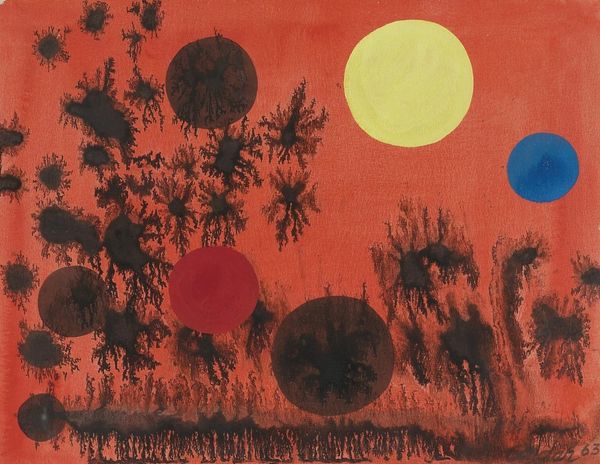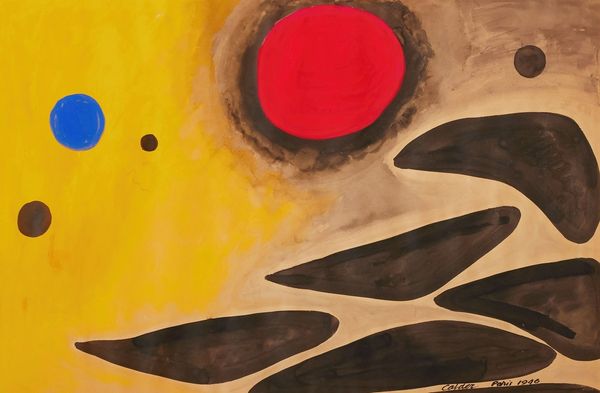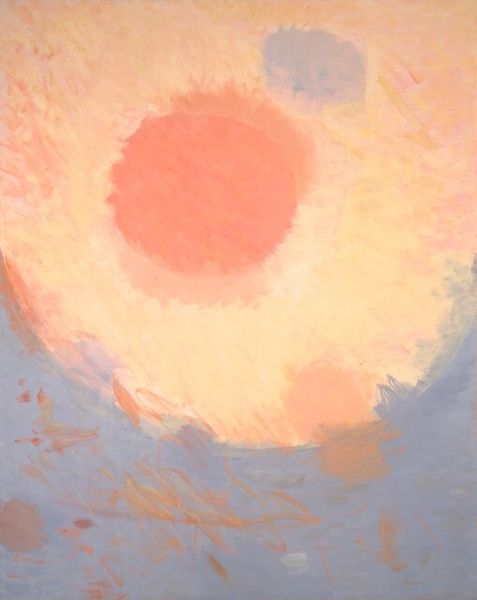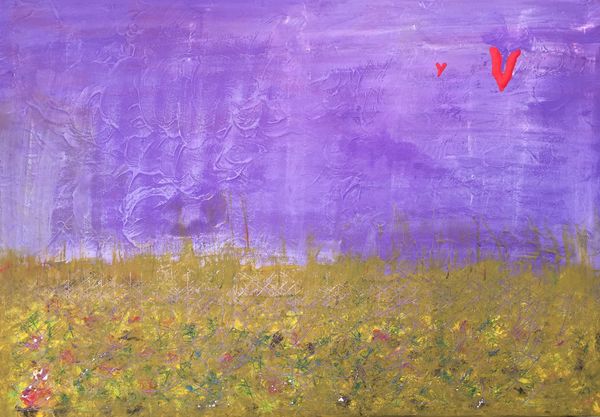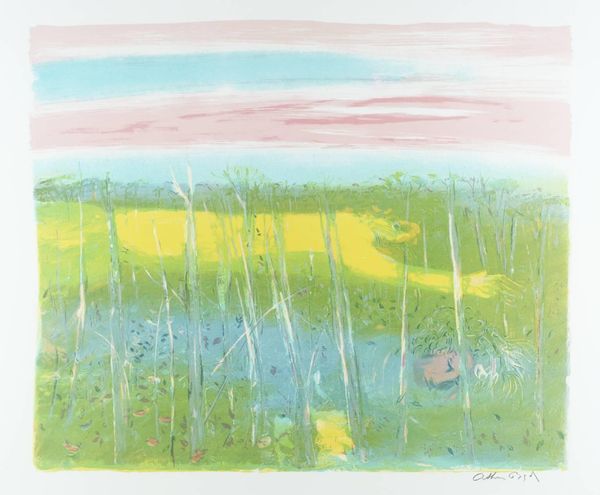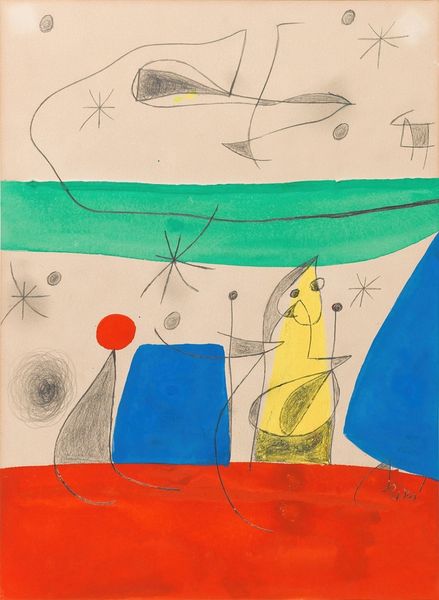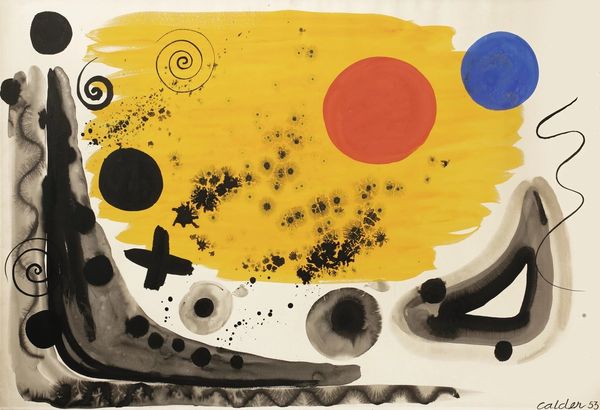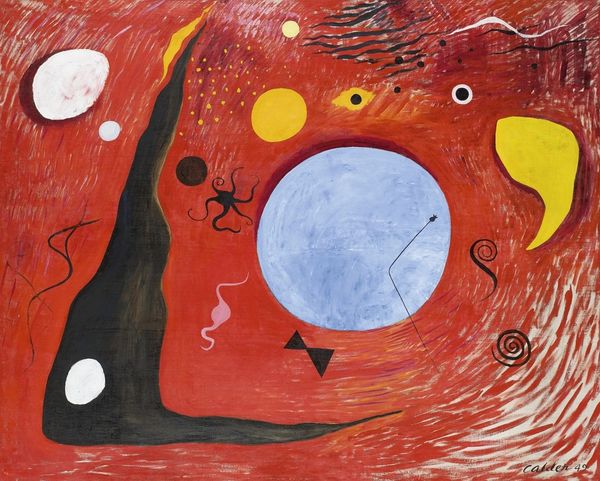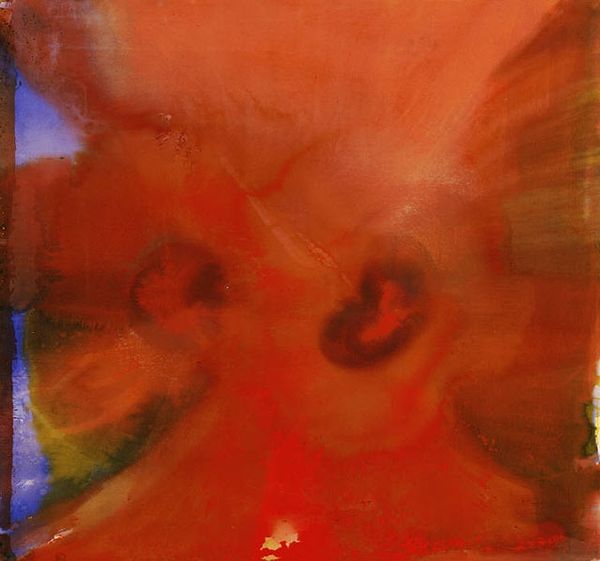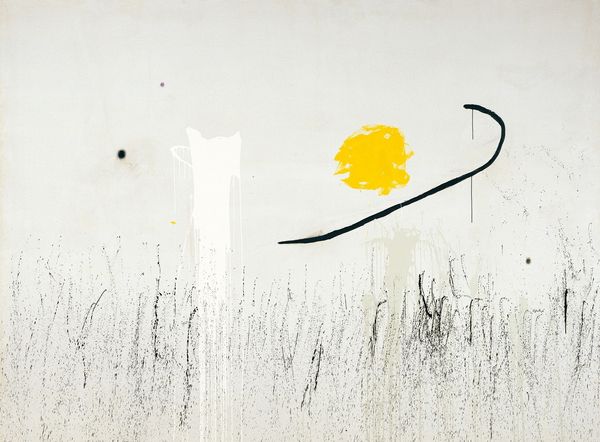
A Wheatfield on a Summer’s Afternoon. Study for backdrop for Scene III of the ballet Aleko 1942
0:00
0:00
Copyright: Modern Artists: Artvee
Curator: Let’s have a look at Chagall's “A Wheatfield on a Summer’s Afternoon,” painted in 1942. It was a study for a backdrop for Scene III of the ballet Aleko. Editor: Well, it definitely radiates a raw, almost feverish energy. The dominant yellows and reds are so intense; it feels more like a memory of summer, maybe one tinged with a bit of anxiety. The materiality, though…is that watercolour? Curator: Yes, it's watercolour on paper. Chagall was in the US during the war, commissioned to design the sets and costumes. Aleko itself told the story of a man alienated from society. And of course, this ties into the anxieties of that era. Editor: It’s intriguing that this was intended as a backdrop, a functional object for a ballet. Looking at the quick, almost crude strokes, the application of washes – it’s clear the process was quick. The materials, though humble, lend a folk-art, raw, urgent feel. There is such a sense of the artist needing to get this down as fast as possible. Curator: Absolutely. The ballet premiered in Mexico City, gaining immense popularity. Considering its creation amidst wartime exile, it demonstrates the artist's active participation in the cultural discourse despite displacement. The folk elements speak volumes. Editor: The way he handles light and shadow with just thin washes, and creates textures of a field using quick brushstrokes… the work is so expressive, almost carelessly so, in its execution. It suggests it's about impressions rather than perfect representation. There is an underlying tension. Is it celebration or premonition? Curator: Indeed. That duality echoes the socio-political climate and Chagall’s own experiences. A nostalgic rural idyll seen through a lens of upheaval and uncertainty. Editor: Examining his choices regarding materiality and processes emphasizes the inherent, underlying value. These paintings challenge conceptions around traditional "high art," which were produced efficiently. It adds a unique facet of value beyond sheer spectacle. Curator: Reflecting on this backdrop design highlights the power of art as a vital expression. Chagall gave voice to collective emotions, a commentary during wartime. Editor: It truly provides such a window into a distinct method for rapid, creative expression, during the flux that the materials suggest.
Comments
No comments
Be the first to comment and join the conversation on the ultimate creative platform.
